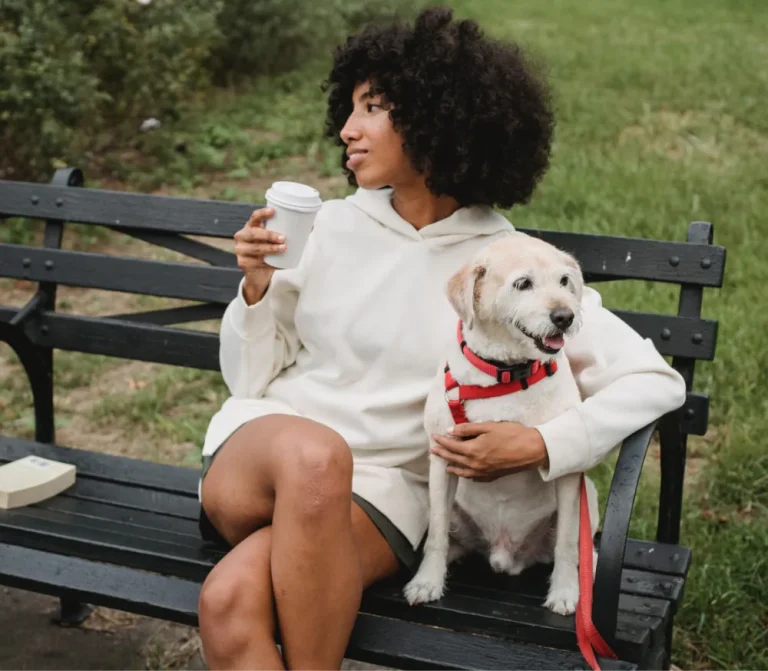
Making your home pet-friendly doesn’t require a complete overhaul – small, thoughtful changes can create a safe, comfortable, and enriching environment for your furry companions. Whether you have a curious puppy, a playful kitten, or a senior dog, there are simple adjustments you can make to ensure your pet feels welcome and secure in every corner of your home. Let’s explore some easy yet effective ways to make your home a pet-friendly haven.
1. Create a Pet-Friendly Space
One of the first things to consider when making your home pet-friendly is carving out a special space for your pet. This space should be a safe, comfortable area where they can rest, play, and feel secure.
A. Comfortable Bedding and Resting Areas
Investing in a soft bed or cushion for your pet is essential. Just like us, pets need a space to relax and unwind after a long day of play or exercise. Whether it’s a cozy dog bed, a plush cat pillow, or a soft mat, providing your pet with their own resting spot ensures they have a place to call their own.
- Tip: Choose bedding that’s washable and made from breathable materials to keep your pet comfortable in all seasons.
B. Designated Play Area
Having a designated play area for your pet is a great way to keep their toys and activities organized. If you have a dog, a space where they can play with their favorite toys or engage in a training session is perfect. For cats, a small cat tree or scratching post in a quiet corner can help them channel their energy in a productive way.
2. Pet-Proof Your Furniture and Flooring
Your furniture and flooring are often the most vulnerable to wear and tear from pets. With a few protective measures, you can safeguard your home while ensuring your pet can enjoy the space safely.
A. Furniture Covers and Slipcovers
If your pet enjoys lounging on the furniture, investing in removable furniture covers or slipcovers will protect your couches and chairs from pet hair, stains, and scratches. These covers are easy to clean and can be thrown in the washing machine for quick maintenance.
- Tip: Choose furniture that’s easy to wipe clean, like leather or microfiber, which are pet-friendly and resistant to hair buildup.
B. Non-Slip Rugs and Mats
Pets can sometimes slip or slide on hardwood or tile floors, especially when running or playing. To prevent accidents, consider adding non-slip rugs or mats in areas where your pet frequently walks or plays. These mats not only help prevent slipping but also add comfort and warmth to the floor.
- Tip: Opt for washable, durable rugs that are easy to clean and maintain, especially if your pet sheds a lot.
3. Keep Pet Essentials Organized
An organized space is a happy space – for both you and your pet. Keeping your pet’s essentials neatly arranged can reduce clutter and make it easier for you to access their things.
A. Toy Storage
Having a dedicated spot for your pet’s toys helps keep the house tidy and prevents toys from being scattered all over the place. Consider a storage basket, bin, or even a hanging organizer near their play area to store chew toys, balls, and other fun accessories.
- Tip: Rotate your pet’s toys every few weeks to keep things interesting and prevent boredom.
B. Food and Water Stations
Designate an area for your pet’s food and water bowls. Make sure it’s easily accessible but also out of the way to avoid spills. If you have a dog, a raised food and water bowl can help with digestion and reduce strain on their neck and joints, especially for larger breeds.
- Tip: Keep the feeding area clean by wiping down the bowls regularly and choosing materials like stainless steel or ceramic, which are easy to maintain and resist bacterial growth.
4. Enhance Pet Safety and Comfort
Creating a pet-friendly home goes beyond comfort – it also means ensuring their safety and well-being. A few simple adjustments can significantly improve the environment for your pet.
A. Pet-Friendly Plants
Many common household plants can be toxic to pets if ingested. To make your home safer for your furry friends, choose non-toxic plants or keep toxic ones out of reach. Some pet-friendly options include spider plants, Boston ferns, and pet-safe succulents.
- Tip: Research any plants before bringing them into your home to ensure they are safe for pets.
B. Safe Zones and Boundaries
If your pet is nervous or tends to get into trouble, setting up safe zones or boundaries can help them feel secure. Use baby gates or pet barriers to keep your pet out of rooms or areas that might be hazardous, such as kitchens or areas with heavy traffic.
- Tip: Create a quiet, calm space where your pet can retreat when they need a break from noise or overstimulation.
5. Maintain a Clean and Healthy Environment
Keeping your home clean and free of allergens is important for your pet’s health, especially if they have sensitivities or allergies.
A. Regular Grooming and Bathing
Regular grooming not only keeps your pet looking their best but also prevents hair buildup and reduces the chances of skin irritation. Make sure to bathe your pet as needed and brush their coat to minimize shedding. Having grooming tools like brushes, nail clippers, and shampoos readily available can help maintain their cleanliness.
- Tip: If your pet is prone to shedding, use a pet-specific vacuum or lint roller to keep the house free from excess hair.
B. Air Purifiers and Ventilation
To create a healthier environment for both you and your pet, consider using air purifiers that help filter out dander, dust, and other allergens. Good ventilation is also key, so open windows regularly and ensure there’s proper airflow throughout the house to prevent pet odors from lingering.
- Tip: Regularly clean your pet’s bedding, toys, and food dishes to keep their environment fresh and free from germs.
6. Encourage Pet Interaction and Enrichment
A pet-friendly home is one that promotes interaction, mental stimulation, and exercise. Your home should offer plenty of opportunities for your pet to stay engaged and active.
A. Interactive Toys and Puzzle Feeders
Interactive toys that dispense treats or puzzles that challenge your pet’s problem-solving skills are a great way to keep them mentally stimulated. These toys can help alleviate boredom and prevent destructive behavior, especially if you’re away from home during the day.
- Tip: Make sure to rotate the toys regularly so that your pet remains interested in them.
B. Regular Playtime
No matter how busy life gets, setting aside time for regular play sessions is essential for your pet’s mental and physical well-being. Whether it’s a game of fetch, tug-of-war, or interactive training, consistent play helps strengthen your bond and keeps your pet healthy and happy.
Conclusion: Small Changes, Big Impact
Making your home pet-friendly doesn’t require major renovations or costly investments – simple changes can have a big impact on your pet’s well-being. By creating designated spaces for comfort, pet-proofing your furniture, keeping things organized, ensuring safety, and maintaining a clean environment, you can provide your pet with a space where they feel loved, comfortable, and secure.
With just a few thoughtful adjustments, your home can become a true haven for your furry friend, enhancing both your pet’s life and your own.



